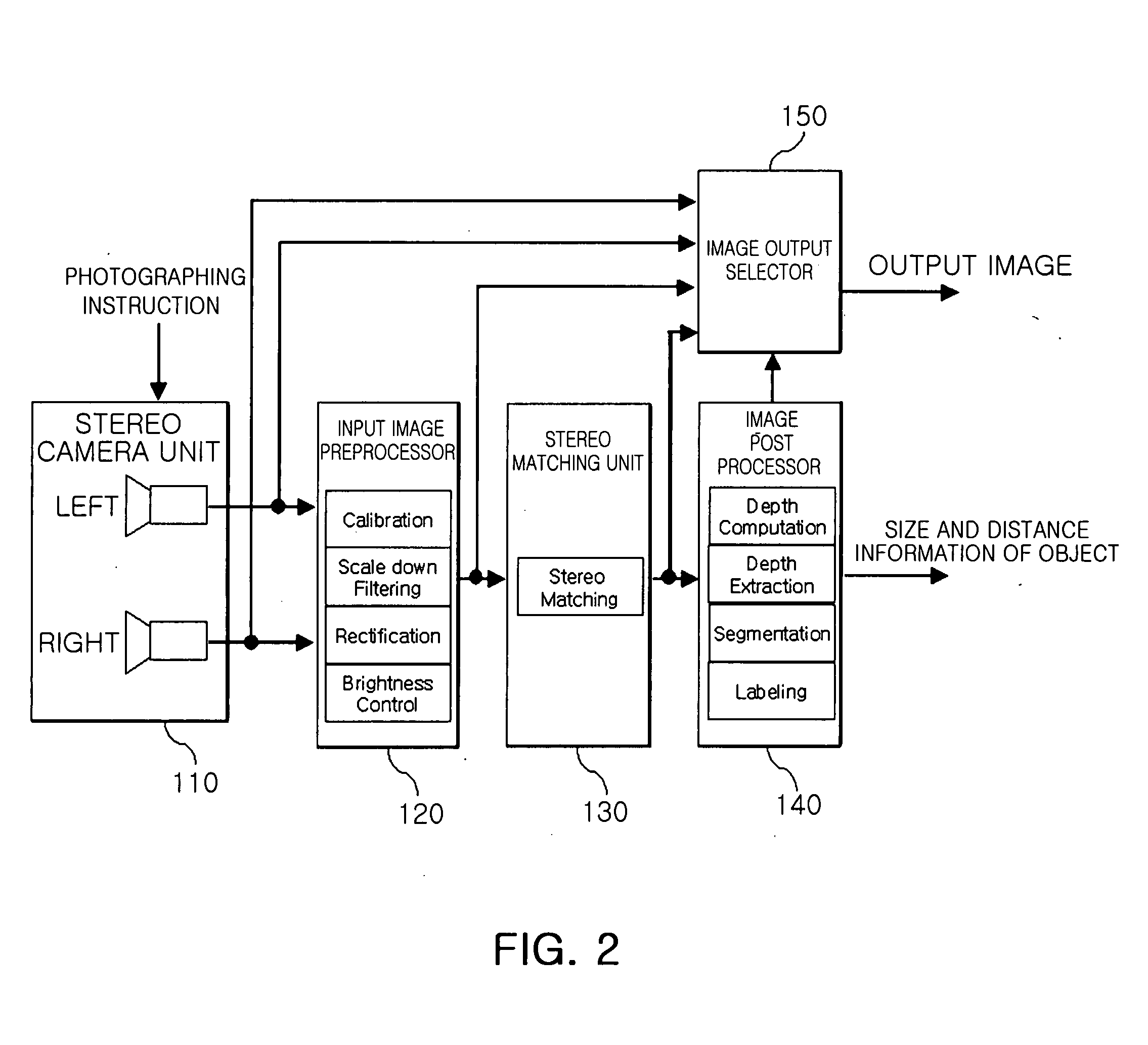Method for searching target object and following motion thereof through stereo vision processing and home intelligent service robot using the same
a technology of stereo vision processing and target objects, applied in the field of recognizing users and following the motion of users in home intelligent service robots, can solve the problems of increasing power consumption, unable to apply the first method to a robot operated by battery power, and reducing the amount of data to transmit the server, reducing the network traffic and the computation load of the server, and low cost
- Summary
- Abstract
- Description
- Claims
- Application Information
AI Technical Summary
Benefits of technology
Problems solved by technology
Method used
Image
Examples
Embodiment Construction
[0037]Certain embodiments of the present invention will now be described in detail with reference to the accompanying drawings.
[0038]The present invention relates to a method for recognizing the motion of a target object through three-dimensional information created using stereo camera and stably following the target object by avoiding obstacles based on the recognizing result. The present invention also relates to a vision processing apparatus of an intelligent service robot, which detecting a target object and obstacles through image information by itself and following the target object based on the detecting result, thereby saving network resources to transmit and receives image data between a server and terminals, and a method thereof.
[0039]FIG. 1 is a block diagram illustrating a network based intelligent service robot system having a vision processing apparatus of a network based intelligent service robot according to an embodiment of the present invention.
[0040]As shown, the ...
PUM
 Login to View More
Login to View More Abstract
Description
Claims
Application Information
 Login to View More
Login to View More - R&D
- Intellectual Property
- Life Sciences
- Materials
- Tech Scout
- Unparalleled Data Quality
- Higher Quality Content
- 60% Fewer Hallucinations
Browse by: Latest US Patents, China's latest patents, Technical Efficacy Thesaurus, Application Domain, Technology Topic, Popular Technical Reports.
© 2025 PatSnap. All rights reserved.Legal|Privacy policy|Modern Slavery Act Transparency Statement|Sitemap|About US| Contact US: help@patsnap.com



